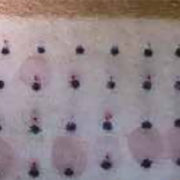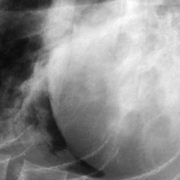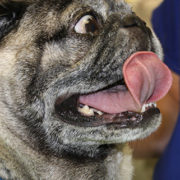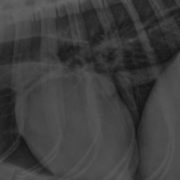Do local blocks and epidurals strike a nerve in your practice?
Andrea Looney, DVM, DACVAA, CCRP, DACVSMR
Ethos Veterinary Health, Inc.
Posted on 2017-03-14 in Anesthesia & Analgesia
Why bother to use nerve blocks and epidurals?
Locoregional nerve blockade will provide pain control and comfort, lowered inhalant concentrations, difficult tissue handling, and reduced postop inflammation. This has been proven by large scale metanalyses in human medicine. Despite the fact that the AAHA/AAFP task force supports the use of local anesthetics of some type in every surgical procedure, this large scale benefit of local blocks has not been proven in small animal populations…yet. However, quality (randomized blinded controlled study) evidence does exist for analgesic, MAC sparing, safety, side effect limiting effects of different local blocks in both orthopedic (mainly cruciate and hind end) and soft tissue (elective surgery mainly) models. Time required to learn and do, invasiveness, cost, and fear of adverse events are reasons many veterinarians don’t venture to learn and do more local or regional nerve blocks in small animal surgery. But using local anesthetics successfully is a risk reducer and a great inexpensive means of providing pain relief and quicker return to normalcy without opioid side effects for our patients…equine and farm animal practitioners have known this for years! Its about time us small animal folks boarded the bus! Nerve blocks can be performed blindly (by palpation and landmark application), via the use of a neurostimulation technique, and via echo or ultrasound location. The aim of this presentation is to give you a well rounded look at the literature behind locoregional blockade and to introduce you to basic concepts, landmarks, anatomy and drugs for common practical blocks.
Peripheral nerve blocks have been compared to epidurals for hind limb analgesia in veterinary orthopedic procedures and shown to provide similar if not superior pain relief, though superiority of any one nerve block over another (ex. femoral vs. intracapsular) has yet to have been substantiated. Urinary retention has been touted as a reason for not performing local blocks, particularly epidurals in veterinary patients yet several studies link MORE urinary issues (primarily retention) with systemic opioids vs. epidural or locoregional opioids. There’s no question that local blocks (both epidurals and single nerve or splash blocks) can provide great pain relief surgically, but they also add to improved recovery, return to function and mobility, appetite, and sooner discharge from the hospital! As well, chronic pain has been reduced with the use of local anesthetics at time of surgery in human patients; this same data is lacking for veterinary patients although a case series of dogs with lumbosacral disease shows partial or complete resolve with epidural infiltration of methyprednisone acetate. Chronic pain states such as that precipitated by oncologic and chronic degenerative disease may benefit from similar locoregional neuraxial technique”
What drugs are used in local nerve blocks and epidurals?
Local anesthetics, opioids, alpha agonists, and even ketamine have been used in local and regional blocks. Let’s look at local anesthetics first. Three local anesthetics that are commonly used in locoregional blocks include lidocaine, bupivacaine and ropivicaine. These are sodium channel blocking agents that are highly protein bound and lipid soluble. These drugs affect autonomic, sensory and motor fibers; bupivacaine and ropivicaine are considered “motor” sparing, but each can loose that specificity especially at high doses. Complications arising from local and regional placement of these substances includes intraneural injection, systemic toxicity (CNS and Cardiovascular), enhanced pain due to inappropriate placement, paralysis, and autonomic dysregulation. Lidocaine is a drug with quickened onset but short duration; bupivacaine and ropivicaine have a delayed onset of blockade but have a prolonged duration of effect, and motor sparing qualities. Many drugs can be used/added to local anesthetics (dexmedetomidine, ketamine, saline, steroids, etc.) to enhance onset, effect, duration, or even minimize side effects of the blockades
How are these drugs placed near nerves or within the epidural space?
Local blocks, epidural or regional blockades be either delivered under heavy conscious sedation or under general anesthesia. Preparation for these interventions should be that of surgical field, asterile followed by sterile prep. Lemke and Dawson outlined anatomic landmarks used in a number of local blocks in an early Vet Clinics North America edition (Matthews KA ed, 2000) so substances could be placed “blindly”. Neurostimulation or electro location of nerves, nerve roots and ganglion is performed with microcurrent directed down a sheathed needle eliciting a small motor response when needle tip is proximal to the intended target (outside of but not within the nerve). Echolocation allows for ultrasound visualization of soft tissues to guide a needle around vessels, tendons, muscles and fascial planes for perineural placement of substances. The goal of all these means is to get the intended concoction as close to the nerve without impaling other important structures (vessels) and without intraneural placement, the later known to precipitate severe chronic pain states
Epidurals
Epidural analgesia is the deposition of substances above the dura or covering meningeal layers. Most commonly this technique is utilized for hind limb and abdominal analgesia although with dilution of drug and increase in volume, it can be used for spinal and thoracic surgery indications as well. The best entry site for administration of epidural substances in small animal patients is the lumbosacral space. Epidural catheters and small pumps can be used to administer repetitive boluses of local anesthetics and or continuous small volume infusions for severe pain states, or staged surgical approaches. Epidurals differ from spinal administration of drugs because their placement is above the dura (“epi” dural, vs. within or below the dura (subdural, or spinal).
Brachial plexus blocks
Brachial plexus blocks are generally utilized for forelimb procedures distal to the shoulder joint. Three approaches for delivery of local anesthesia have been proposed. The first involves a standard historical approach wherein the patient lays in lateral recumbency; the block commences with entry medial to the point of the shoulder with needle directed caudal, abaxial and towards the costal arch finding the meshwork of brachial nerves medial to the point of the shoulder. The second “ventral axillary” approach is performed with the patient in dorsal recumbency, and the needle enters the brachial plexus network at the base of a triangle formed by the sternocephalicus medially, the brachiocephalicus laterally, and the pectoral muscle caudally. The needle is advanced under the shelf of the pectoral muscles; this approach seems to separate the cranial nerves from the caudal arterial/venous vessels. The third and final “paravertebral” approach is performed in lateral recumbency. Instead of the needle advancing medial to the shoulder joint, the needle is advanced cranial and caudal to the C6 transverse process, and finally at a very acute angle, cranial to the first rib head; the local anesthetic essentially reaches the nerve roots Pre formation into the brachial plexus.
Femoral and Sciatic blocks
Sciatic and femoral nerve blocks are performed usually with the use of electrostimulation or echolocation to avoid femoral artery and vein puncture. Sciatic nerve blocks are done most commonly by insertion of a needle between the greater trochanter and the ischium. The femoral nerve block is done by insertion of a needle through the Sartorius muscle in the femoral triangle. The combination of femoral and sciatic nerve block has been found to be equally effective to or more effective than epidural analgesia for hind limb cruciate repair procedures. Both nerve blocks are necessary for standard stifle approaches. By using both of these blocks, the need for an epidural is avoided and yet, there is still great analgesia during stifle surgery
Dental blocks
Dental blockades are performed to facilitate tooth or oral mass removal. Major maxillary nerve approaches range from subzygomatic to infraorbital to intraoral (trans palate) needle insertion. This author prefers needle entry under the most rostral aspect of the zygomatic arch, directed at a 90 degree angle to the skin, cranial to the ramus of the mandible into the pterygoid fossa where the maxillary nerve traverses proximal to its entry in the infraorbital canal. The mandibular nerve can be approached from ventral through the chin skin or intraorally but either way, the intended target is the medial angle of the jaw proximal to where the nerve enters the mandibular canal. This author uses a 4 point block of both maxillary and both mandibular nerves when teeth are required to be removed from all jaw sides, right and left maxilla and mandible.
Orbital blocks
Orbital nerve blocks can be performed for enucleation or pre-enucleation to prove necessity of such a surgery to an owner. The inferior temporal subpalpebral block enters from the face, the perimandibular technique enters the same approach as the subzygomatic approach outlined above in the dental patient, and the final technique enters just cranial to the periorbital ligament with block progressing periconal towards the opposite ear drum. Regardless of which technique is chosen, the goal is placement of the substances around the orbital cone with diffusion to the ocular nerve and surrounding tissues, vs. within the ocular fascial cone, hence the terminology of retro or peribulbar blockades.
Common recipes for epidural and locoregional blocks in dogs and cats
Epidurals – Dogs and Cats
Options:
- 1 ml of 0.5% Bupivicaine per 10-15 kg LEAN body weight
- 0.3 to 0.5mg/kg bupivacaine
- 0.5 ml of 0.5% bupivicaine and 0.5ml of saline per 10-15 kg LEAN body weight
ALL OF THE ABOVE +/- morphine or hydromorphone at 0.02mg/kg
Brachial plexus blockade
Dogs: 0.3-1 mg/kg Bupivicaine +/- 1 mg/kg Lidocaine +/-volume of saline less than or equal to the volume of bupivacaine
Cats: 0.5 mg/kg Bupivicaine +/-1 mg/kg Lidocaine +/- saline equal in volume to that of lidocaine
Femoral and sciatic nerve blocks / Proximal forearm blocks (radial, median, ulnar, musculocutaneous nerves)
Dogs and Cats: 0.3-0.5mg/kg Bupivicaine split between multiple sites
Dental blocks (total doses)
Dogs: 0.3mg/kg Bupivicaine + 0.5 mg/kg Lidocaine +/- volume in saline equal to the volume of bupivacaine
Cats: 0.5mg/kg Bupivicaine + 1mg/kg Lidocaine +/- saline equal in volume to bupivacaine
Retrobulbar block
Dogs: 0.2-0.5mg/kg Bupivicaine + 1mg/kg Lidocaine
Cats: 0.2-0.3mg/kg Bupivicaine + 0.5mg/kg Lidocaine
Intercostal block (total doses)
0.5-1mg/kg Bupivacaine + 1-2 mg/kg Lidocaine +/- volume of saline equal to volume of bupivacaine. Should be spread out over 2-4 intercostal nerves cranial to and caudal to the proposed site of lateral intercostal approach. (dogs and cats similar dosing, with cats utilizing lower end of given ranges)
Distal Forefeet Blocks
Dogs and Cats: 0.2mg/kg Bupivicaine + 1-2 mg/kg Lidocaine + saline split between two forefeet
Psoas/Lumbar Plexus blockade
0.5-1mg/kg Bupivicaine + volume of saline equal to that of bupivacaine (dogs and cats similar dosing, with cats utilizing the lower end of given ranges)
Further reading
- Abelson A, McCobb EC, Shaw S et al. (2009) Use of wound soaker catheters for the administration of local anesthetic for post-operative analgesia: 56 cases. Vet Anaesth Analg. Nov;36(6):597-602.
- Bagshaw HS et al. 2009. A technique for ultrasound-guided paravertebral brachial plexus injections in dogs. Vet Radiol Ultrasound.;50(6):649-54
- Bergadano A, Moens Y, Schatzmann U (2006). Continuous extradural analgesia in a cow with complex regional pain syndrome. Vet Anaesth Analg. May;33(3):189-92.
- Bortolami E, Love EJ, Harcourt-Brown TR et al. 2012. Use of mid-humeral block of the radial, ulnar, musculocutaneous and median (RUMM block) nerves for extensor carpi radialis muscle biopsy in a conscious dog with generalized neuro-muscular disease. Vet Anaesth Analg. July;39(4):446-7
- Birmingham, SSW, Reed SM, Mattoon JS et al. (2010) Qualitative assessment of corticosteroid cervical articular facet injection in symptomatic horses. Equine Vet Educ. February;22(2):77-83. 28
- Brown D, Iadarola MJ, Perkowski SZ, et al. 2005 Physiologic and antinociceptive effects of intrathecal resiniferatoxin in a canine bone cancer model. Anesthesiology. November;103(5):1052-9.
- Campoy L. Fundamentals of regional anesthesia using nerve stimulation in the dog. In: Gleed RD, Ludders JW, editors. Recent Advances in Veterinary Anesthesia and Analgesia: Companion Animals. Ithaca: International Veterinary Information Service, 2008
- Campoy L, Bezuidenhout AJ, Gleed RD. 2010. Ultrasound-guided approach for axillary brachial plexus, femoral nerve, and sciatic nerve blocks in dogs. Vet Anaesth Analg. March;37(2):144-53.
- Caniglia AM et al. 2012. Intraoperative antinociception and postoperative analgesia following epidural anesthesia versus femoral and sciatic nerve blockade in dogs undergoing stifle joint surgery. J Am Vet Med Assoc. December;241(12):1605-12.
- Cassuto J, Sinclair R, Bonderovic M. Anti-inflammatory properties of local anesthetics and their present and potential clinical implications. Acta Anaestheesiol Scand 2006;50(3):265–82.
- Congdon J, Rezende M, Boscan P. (2011) Efficacy of Psoas Compartment Femoral Nerve Block and Parasacral Sciatic Nerve Block in Dogs Presenting for Pelvic Limb Amputation. Proc Int Vet Emerg Crit Care Symp http://www.vin.com/doc/?id=5145882 accessed July 5, 2013.
- Cousty M, Firidolfi C, Geffroy O et al. Comparison of medial and lateral ultrasound-guided approaches for periarticular injection of the thoracolumbar intervertebral facet joints in horses.Vet Surg. June 2011;40(4):494-9
- Day TK, Pepper WT, Tobias TA et al. (1995) Comparison of intra-articular and epidural morphine for analgesia following stifle arthrotomy in dogs. Vet Surg. 1995 Nov-Dec;24(6):522-30
- Derossi R, Bertoni RA, Ruzzon RH, et al. 2010. Segmental dorsolumbar epidural analgesia via the caudal approach using multiple port catheters with ketamine or lidocaine or in combination in cattle. Vet Anaesth Analg. September;37(5):451-9.
- Franci P, Leece EA, Corletto F. 2012. Thoracic epidural catheter placement using a paramedian approach with cephalad angulation in three dogs. Vet Surg. October;41(7):884-9.
- Futema F, Fantoni DB, Auler JOC, Cortopssa SRG, Acaui A, Stopiglia AJ. A new brachial plexus technique in dogs. Vet Anaes Analg 2002;29:133-139.
- Garcia-Pereira FL, Sanders R, Shih AC, et al. 2013. Evaluation of electrical nerve stimulation for epidural catheter positioning in the dog. Vet Anaesth Analg.
- Hadley HS, Wheeler JL, Petersen SW. Effects of intra-articular botulinum toxin type A (Botox®) in dogs with chronic osteoarthritis: a pilot study. Vet Comp Orthopaed. 2010;4:254–258.
- Hansen BD, 2001. Epidural Catheter Analgesia in Dogs and Cats: Technique and Review of 182 Cases (1991-1999). J Vet Emerg Crit Care. Apr-Jun;11(2):95-103.
- Hofmeister EH, Kent M, Read MR. Paravertebral block for forelimb anesthesia in the dog–an anatomic study. Vet Anaes Analg 2007;34:139-142
- Janssens L, Beosier Y, DaemsR (2009). Lumbosacral degenerative stenosis in the dog. The results of epidural infiltration with methylprednisolone acetate: a retrospective study.Vet Comp Orthop Traumatol. 2009;22(6):486-91
- Jones RS. Combining local and general anesthesia for better pain relief in dogs and cats. Vet J 2008;178(2):161–2.
- Lemke KA, Dawson SD (2000) Local and regional anesthesia. Vet Clin North Am Small Anim Pract. July;30(4):839-57
- Looney AL. Veterinary cancer pain management. Topics in Companion Animal Medicine
- Mahler SP, Adogwa AO. Anatomical and experimental studies of brachial plexus, sciatic, and femoral nerve-location using peripheral nerve stimulation in the dog. Vet Anaes Analg 2008;35:80-89.
- Moens NM, CAulkett NA. (2000) The use of a catheter to provide brachial plexus block in dogs. Can Vet J. September 41(9):685-9.
- Rioja E, Sinclair M, Chalmers H, et al. Comparison of three techniques for paravertebral brachial plexus blockade in dogs.Vet Anaesth Analg. March 2012;39(2):190-200.
- Shilo Y et al. 2010. Ultrasound-guided nerve blocks of the pelvic limb in dogs. Vet Anaesth Analg.;37(5):460-70.
- Swalander DB, Crowe DT, Hittenmiller DH, et al. 2000. Complications associated with the use of indwelling epidural catheters in dogs: 81 cases (1996-1999). J Am Vet Med Assoc. February;216(3):368-70.
- Valverde A, Dyson DH, McDonell WN et al. (1989) Epidural morphine reduces halothane MAC in the dog Can J Anaesth. November 36(6):629-32.
- Van Vynckt D. et al. 2010 A review of the human and veterinary literature on local anaesthetics and their intra-articular use. Relevant information for lameness diagnosis in the dog. Vet Comp Orthop Traumatol. ;23(4):225-30
About the author
Dr. Looney joined the IVG network of hospitals in 2014 to develop and expand anesthesia services at all of the hospitals in our network. Her special interests include interventional pain management, rehabilitation, palliative care, postoperative care and anesthesiology. |

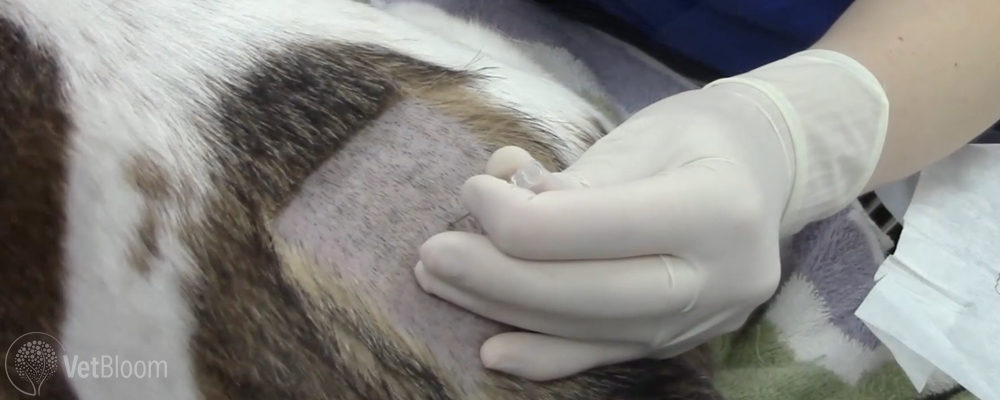
 Dr. Looney graduated from Cornell University’s College of Veterinary Medicine in 1989. She spent a year in private practice, then returned to Cornell’s small animal hospital for an instructorship in Community Medicine and Anesthesiology. In 1997 she completed a Residency in Anesthesiology and became boarded in Anesthesiology in 2001. Post residency, Dr. Looney held positions with Angell/MSPCA Animal Medical Center in Boston and Springfield, MA in Intensive Care, Anesthesiology and General Medicine, Tufts Cummings School of Veterinary Medicine and Tufts Veterinary Emergency Treatment and Specialties as Hospital Director and Assistant Clinical Professor, and most recently Cornell University’s College of Veterinary Medicine where she spearheaded the Pain Management and Rehabilitation Service for both large and small animals.
Dr. Looney graduated from Cornell University’s College of Veterinary Medicine in 1989. She spent a year in private practice, then returned to Cornell’s small animal hospital for an instructorship in Community Medicine and Anesthesiology. In 1997 she completed a Residency in Anesthesiology and became boarded in Anesthesiology in 2001. Post residency, Dr. Looney held positions with Angell/MSPCA Animal Medical Center in Boston and Springfield, MA in Intensive Care, Anesthesiology and General Medicine, Tufts Cummings School of Veterinary Medicine and Tufts Veterinary Emergency Treatment and Specialties as Hospital Director and Assistant Clinical Professor, and most recently Cornell University’s College of Veterinary Medicine where she spearheaded the Pain Management and Rehabilitation Service for both large and small animals.